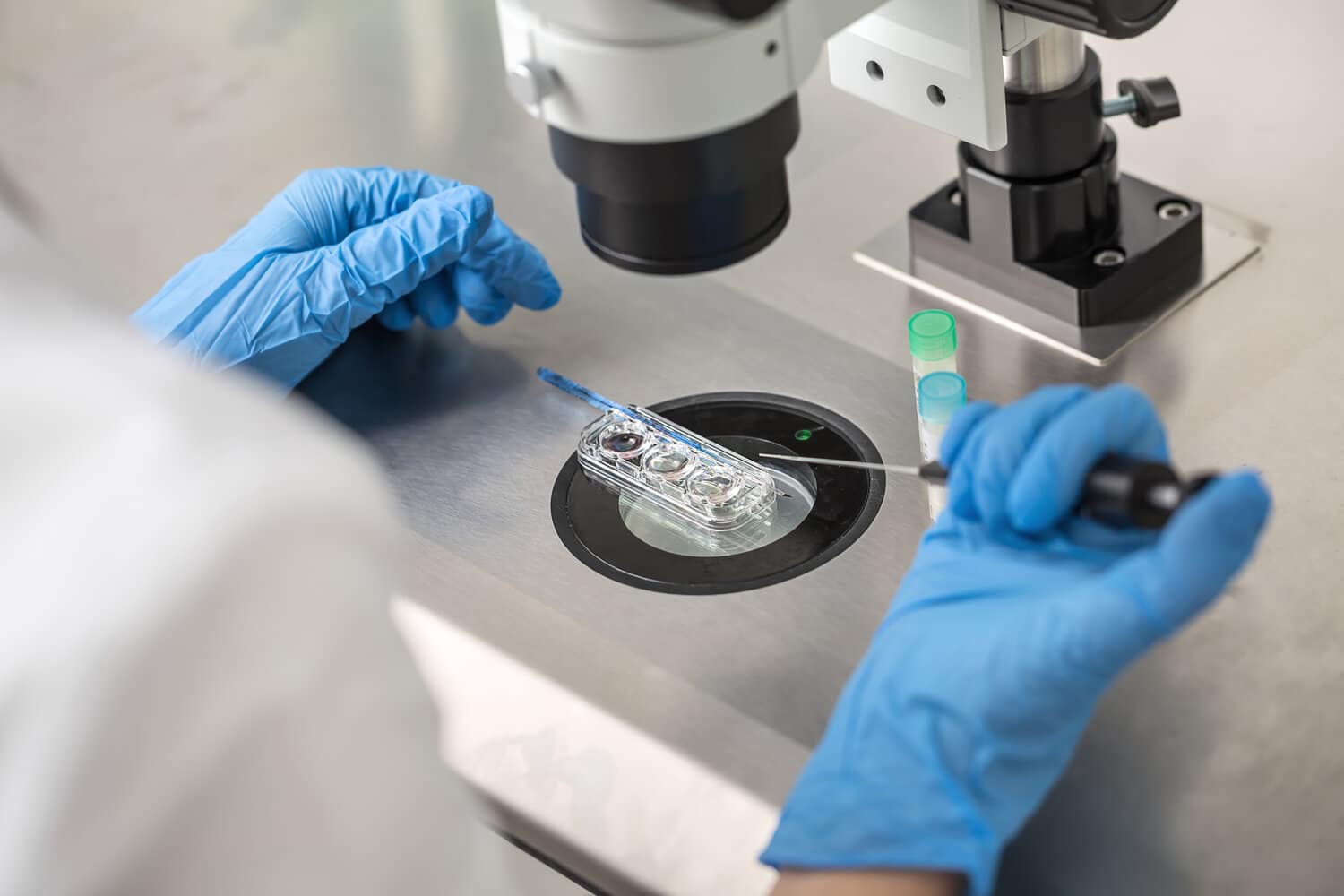If you’re a child-free woman in your 30s, you’ve definitely heard warnings – however overt or subtle – about not ‘leaving it too late’.
But this isn’t just an insulting message, it’s also very unhelpful, as there are many factors that can affect when someone might feel ready to have a baby.
Getting an education, building a career, buying a house, becoming financially ready, feeling mentally ready, and of course, the not-so-simple task of meeting someone you actually want to procreate with and building a secure, stable relationship with them – are all things that can take years and happen at different rates for different people.
“The majority of people don’t feel in a position to start a family until later than ever before,” says Professor Tim Child of Oxford Fertility.
“There are now more women giving birth in their 40s than in their 20s and the average age of a [first-time] mother is now 30.3 years. Men are also ‘delaying’ fatherhood, with the average age of a first-time dad now 32.9.”
So what does an expert have to say about the issue? Here, Professor Child shares seven things he believes are important to keep in mind about fertility…
1. Sure, age plays a part – but it’s more complex than that

While overall, age is certainly a factor, Child says: “It’s important to remember everybody’s fertility is unique. Infertility is a spectrum – some people have higher chances of success while others have severe symptoms.”
The modern narrative would have us believe that the rate of decline is steep and that getting pregnant between 35 and 40 is always tough, but as Child points out, NICE Fertility guidelines state 80% of women aged 35-39 will conceive naturally within 12 months of regular unprotected sex. That’s compared to 85% age 30-34, and 90% under 30.
“Therefore, twice as many women aged 35-39 will experience fertility problems compared to women under 30,” he says. “It tends to be because the number and quality of eggs in ovaries declines.” However, looking at those statistics, the odds are very much still in your favour.
He adds: “No one is guaranteed to not have a problem conceiving, especially as age of the eggs is only one factor – others include tubal damage, endometriosis, lack of ovulation and, of course, male factor. The only true test of fertility is to actually try to conceive.”
2. Infertility affects men just as much as women

“A third of couples experiencing fertility problems struggle to conceive due to the man’s fertility; for another third it’s due to the woman’s fertility, and for another third infertility remains unexplained,” says Child. “But fertility problems in men are on the rise – one in five men now have a low sperm count.”
Problems with sperm is the most common cause of infertility in men, he explains. “This may be because of a low count or no sperm, or because the sperm is the wrong shape or don’t move very quickly.”
He says it can be down to damaged testicles, hormone levels, a previous illness, or medication or it can be an inherited problem, but often there’s no known cause.
3. You can take practical steps to understand your own fertility
While you most likely will have to attend a private clinic, Child says an increasing number of young single people and couples are taking fertility tests.
“If fertility problems are spotted early, it can improve chances of conception later,” he explains. “Five tests to ask about include AMH blood test, ultrasound examination, antral follicle count, semen analysis and a full review of medical and reproductive history.
“Armed with your test results and family history, your consultant will be able to give you an accurate picture of your fertility and if any steps need to be taken now to preserve your future family plans.”
4. Lifestyle matters

Child says lifestyle choices have a “significant impact” on fertility – but if you change them, in the majority of cases, you can improve your fertility levels.
“For women, weight has a significant role to play in fertility. If you’re a woman who is underweight or overweight, it can impact the chances of you conceiving and also miscarrying. For men, weight has less of an effect, though sperm quality does decrease as the weight increases, so best to keep a watch.
“Nicotine, even in passive smoking, reduces fertility in both men and women,” Child adds. “If either partner smokes, it can take longer to conceive, cause fertility problems and doubles the chances of suffering a miscarriage,” he says, adding that studies in vaping have found that this also may negatively affect fertility.
“All recreational drugs are known to negatively affect men’s and women’s fertility. And if you drink too much caffeine, it could affect [it too], so while trying to conceive, consider switching to decaffeinated,” he says.
5. But some things really make no difference
“We are often told to relax when trying for a baby, which can be hard if you are experiencing problems conceiving. Actually [stress] doesn’t appear to make a difference to your chances of conception,” he says.

Beware of ‘fertility diets’ too – as long as you’re eating a good variety of healthy foods, Child says any dietary changes are “unlikely to make a significant difference”.
And there’s no need to give up booze entirely in order to boost fertility. “Heavier drinking is associated with a decrease in fertility, particularly in men, but research hasn’t yet found a strong link between moderate drinking and infertility.”
6. It’s important to get to know your cycle
Irregular periods could be impacting your chances of conception, so in order for medical professionals to help pinpoint any issues, it’s a good idea to understand your cycle – while also knowing period tracking apps won’t be able to tell when you’re ovulating.
“Many women with irregular periods use ovulation kits or apps to help. But these tools can add stress and cost, and if it doesn’t work or you are using it incorrectly, you could potentially miss having sex during ovulation,” Child says, recommending having sex every two to three days between periods instead.
“If the irregularity to your periods is new, your periods last longer than seven days, their length varies significantly, they happen less than every 21 days, or more than every 35 days, or if you are struggling to conceive, it is best to see your GP,” he adds.
Changes could be down to stress or weight changes, but variations can also be a sign of a thyroid condition or polycystic ovary syndrome (PCOS), which Child says impacts one in 10 women and affects how the ovaries work.
7. IVF isn’t a guarantee – but chances of success are far higher than they used to be

IVF was first introduced more than 40 years ago and “in the early days, success rates across the UK were around 12% and the multiple birth rate was relatively high, which brings a more complicated pregnancy”, notes Child.
“Now at Oxford Fertility, nearly 60% of patients under 35 years old achieve a positive pregnancy test with each treatment cycle and our multiple birth rates stand at just over 5% (down from 30% a few years ago).”
A new process, vitrification, is making egg freezing more reliable too. “Vitrification offers a rapid way of freezing the egg, so there is no crystal formation and the eggs don’t lose their viability,” Child says. “It’s early days for vitrification and clinics are seeing success rates using frozen eggs of around 35%.”





